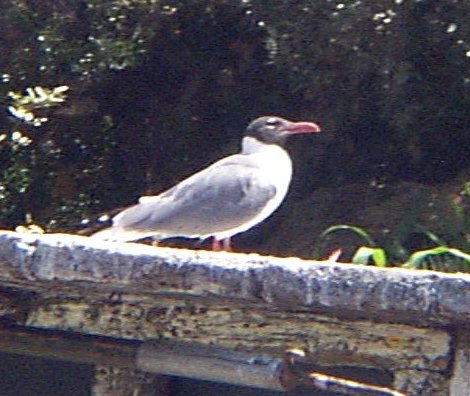Laughing Gull
|
Physical description:
|
General information:
|
| Special anatomical, physiological
or behavioral adaptations: The Laughing Gull is named for its unique call, which is comparable to the human laugh. They compensate for their lack of fishing skills by scavenging and stealing from other birds. The females have developed the ability to replace eggs that don't survive by laying more eggs. They can do this up to four times. You can hear the gull call at this USGS link.
|
 |
|
The Laughing Gulls at the Fort Worth Zoo: There are currently 5 Laughing Gulls at the Fort Worth Zoo. According to the zoo keeper, the zoo feeds them very well, but they still scavenge and steal in captivity. Personal Observations: It took three visits to the zoo to find the Laughing Gull. I don't know where they might have been hiding during my first two visits; however, on the third visit I was able to observe their behavior. I counted only four gulls, but the zoo keeper claimed there were five. They did not fly very much. They seemed to spend most of their time swimming in the cool water or walking along the tin roof of the building. Unfurtunately, I never got to see them eat. It would have been fun to see them trying to steal from the other animals! |
|
Source Materials and Related Links:
McGraw-Hill Higher Education, 2000 . |
|
Send E-mail to carpdrumshop@hotmail.com or to mac@whozoo.org |

WhoZoo HomeMammals at the Fort Worth Zoo
Birds at the Fort Worth Zoo
Reptiles and Amphibians at the Fort Worth Zoo
Fish at the Fort Worth Zoo